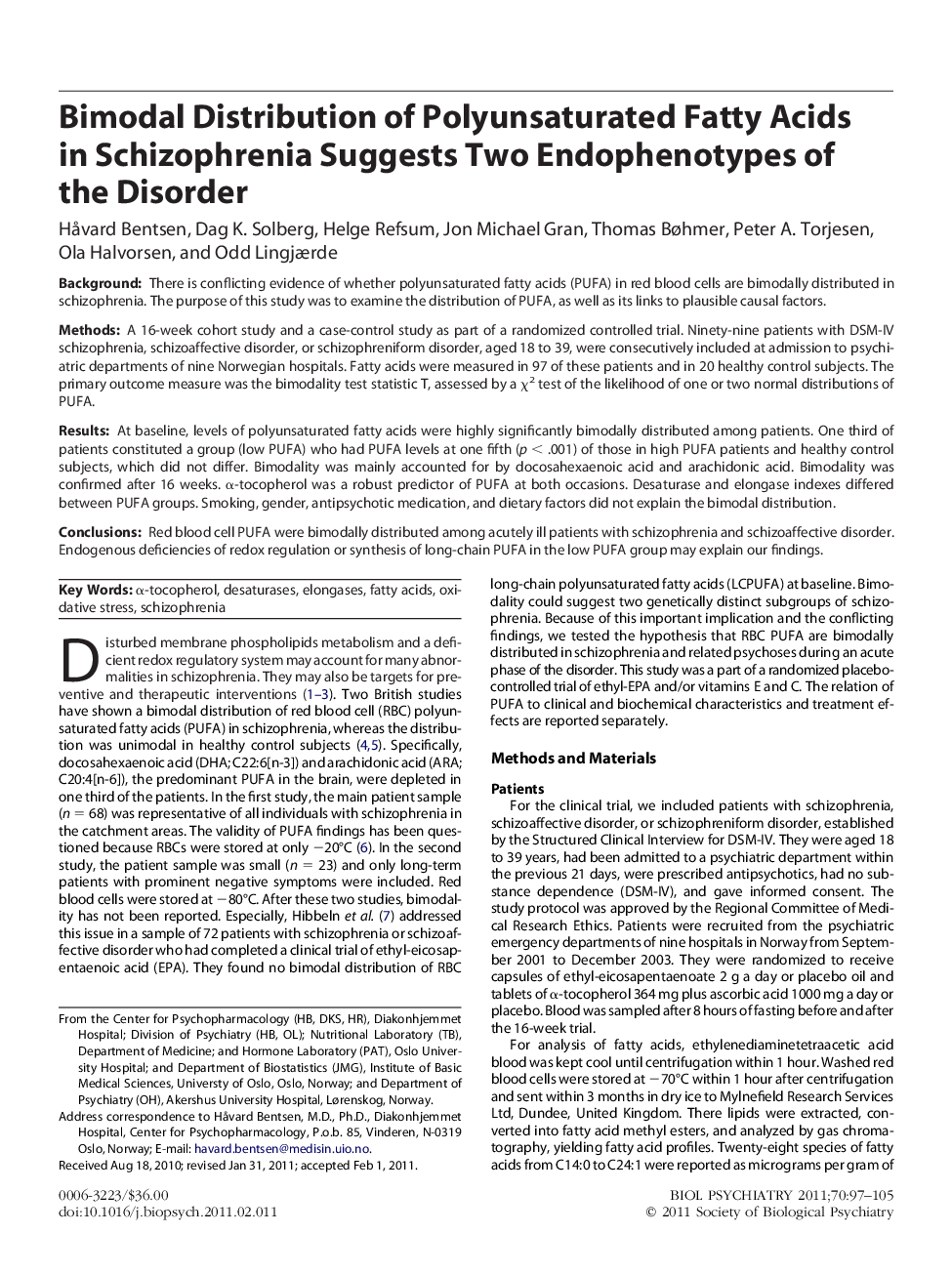| Article ID | Journal | Published Year | Pages | File Type |
|---|---|---|---|---|
| 4178338 | Biological Psychiatry | 2011 | 9 Pages |
BackgroundThere is conflicting evidence of whether polyunsaturated fatty acids (PUFA) in red blood cells are bimodally distributed in schizophrenia. The purpose of this study was to examine the distribution of PUFA, as well as its links to plausible causal factors.MethodsA 16-week cohort study and a case-control study as part of a randomized controlled trial. Ninety-nine patients with DSM-IV schizophrenia, schizoaffective disorder, or schizophreniform disorder, aged 18 to 39, were consecutively included at admission to psychiatric departments of nine Norwegian hospitals. Fatty acids were measured in 97 of these patients and in 20 healthy control subjects. The primary outcome measure was the bimodality test statistic T, assessed by a χ2 test of the likelihood of one or two normal distributions of PUFA.ResultsAt baseline, levels of polyunsaturated fatty acids were highly significantly bimodally distributed among patients. One third of patients constituted a group (low PUFA) who had PUFA levels at one fifth (p < .001) of those in high PUFA patients and healthy control subjects, which did not differ. Bimodality was mainly accounted for by docosahexaenoic acid and arachidonic acid. Bimodality was confirmed after 16 weeks. α-tocopherol was a robust predictor of PUFA at both occasions. Desaturase and elongase indexes differed between PUFA groups. Smoking, gender, antipsychotic medication, and dietary factors did not explain the bimodal distribution.ConclusionsRed blood cell PUFA were bimodally distributed among acutely ill patients with schizophrenia and schizoaffective disorder. Endogenous deficiencies of redox regulation or synthesis of long-chain PUFA in the low PUFA group may explain our findings.
